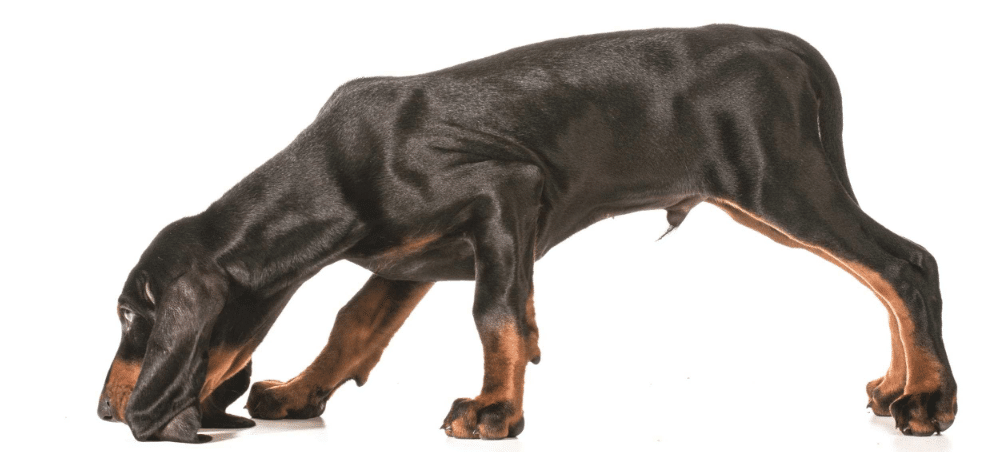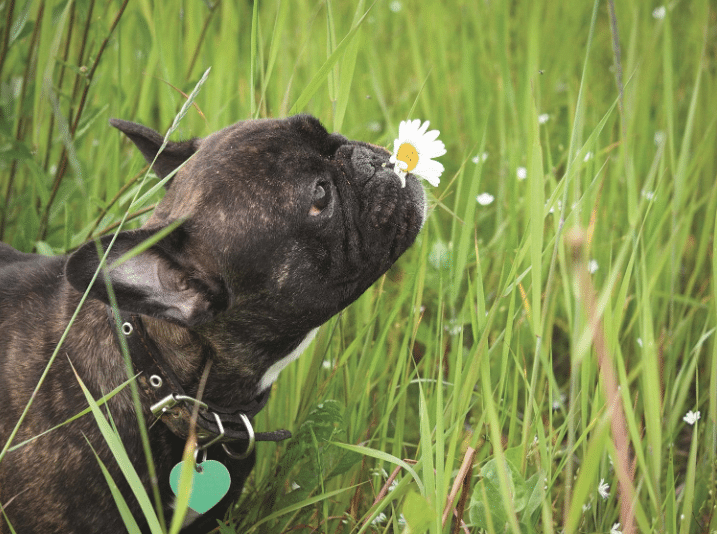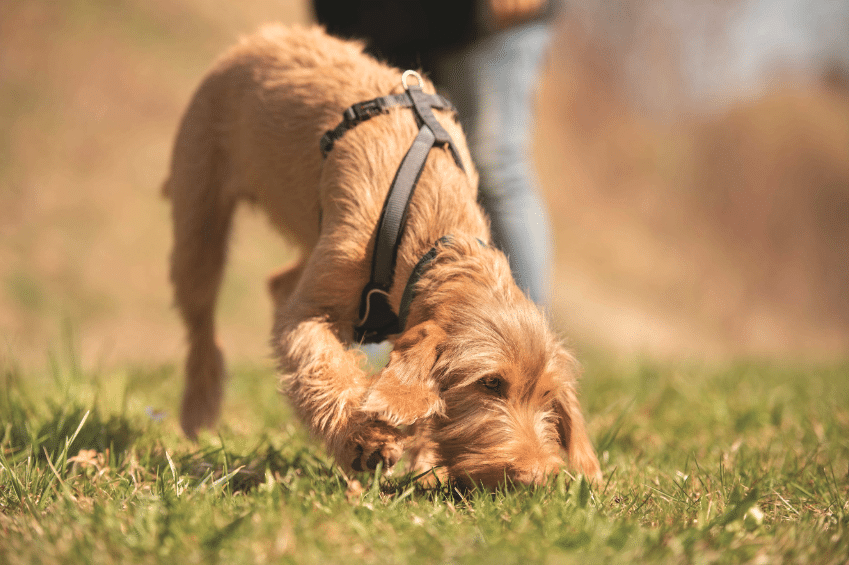Just think of all of the amazing jobs dogs have thanks to their nose abilities. They sniff out cancer, diabetes, seizures, illegal drugs, explosives, deceased humans, lost humans and much more. We can’t do these amazing things, but our dogs sure can. We need their skills.

Teaching “sniff” and “let’s go”
A dog’s impressive nose explains why they forever want to stop and smell the roses (and everything else) when out on walks. I actually beg owners to allow their dogs to stop and sniff when out and about. Just look at the shape of a dog’s nose and its length compared to our stubby little noses. What’s important to us snub-nosed people is not the same thing that is crucial to a long-nosed dog. You can light up a dog’s brain by allowing her to sniff, sniff, sniff on walks.
I know what you might say: But it’s boring and takes forever on a walk if I let my dog sniff the whole time. Boring for the human, yes — but exhilarating for your best four-legged friend. I ask owners to work out a system that both species understand. For example, I say ,“Let’s walk” or “Let’s go” when I want my dogs to move along. When it’s OK for them to sniff about, I tell them “Go sniff!” I had to teach them the meaning of these cues, but it isn’t hard and shouldn’t take long.
I think it’s cruel to start a walk in a new, exciting place and then demand your dog “move forward now.” Please don’t do that. Set your dog up for success. Let her start the walk sniffing everything. You determine the time, but I love to see at least the first 10 minutes and last 10 minutes be all about the dog’s needs. Praise the sniffing and tell your dog “Go sniff” as she is marching toward a fire hydrant to get all the updated pee-mails.
You can start teaching your dog a “let’s go” command by walking on concreted areas at first to limit the appeal of the surroundings to your pooch. I live in a very quiet neighborhood so I can safely walk in the middle of the paved road, especially in the middle of the day. If your area is too busy, you can always drive to a quieter spot. Pick up your pace and your energy level, and say “Let’s go!” and move out together. If you need to bring a toy or treats to encourage and reward forward movement, do it!
The daily walk can become a source of joy to you both instead of a battle of the nose and your desire to get you and your dog a lot of exercise. Your dog will be happier and even more tired using her big nose than she will galloping around the neighborhood without being able to sniff, sniff, sniff.

Get into nose work
Beyond the walk, there are numerous ways to enjoy nose work games. You can Google “fun canine nose work” and find many free videos that demonstrate how to teach your dog fun nose work in your home and backyard (if you have one). You will be doing your dog a solid favor while tiring her out playing a game of “find it” indoors. It’s especially helpful when the weather outside is rotten but it’s a game you can play every day, and few dogs tire of it.
Canine nose work trials have taken the sport world by storm the last few years. For many years I was a member of the National Association of Canine Scent Work (k9nosework.com), a wonderful organization that hosts nose work trials for dogs finding and alerting on three scents. This group has talented certified nose work trainers all over the country. If you want to kick it up a notch and get fun (and demanding!) titles for your dog in this sport, I highly recommend looking into it. Most every dog I’ve worked with has loved this sport. My dogs passed the three ORT (Odor Recognition Test on birch, anise and clove), and my senior Border Collie learned this sport starting at age 10. I’ve met even older dogs who enjoy nose work trials! It can also be an amazing thing for highly reactive dogs to learn.
I wish you and your dogs a lot of sniffing and fun out there!
This is my final training column for Dogster magazine, as I am retiring from 20 years of dog training. I’ve so enjoyed writing about my favorite subject all of these many years. I hope what I have written about has been helpful. Now go grab your leashes, and get to walking and letting your dog enjoy his incredible nose!
Thumbnail:©K_Thalhofer | Getty Images
About the author:
Annie Phenix, CPDT-KA, is a professional dog trainer based in Utah. She is a force-free trainer specializing in working with troubled dogs. She is the author of The Midnight Dog Walkers: Positive Training and Practical Advice for Living With a Reactive or Aggressive Dog. For more information, visit phenixdogs.com.
Learn more on dogster.com:





